What body signals are indications of impending cardiovascular disease?
What body signals are indications of impending cardiovascular disease? 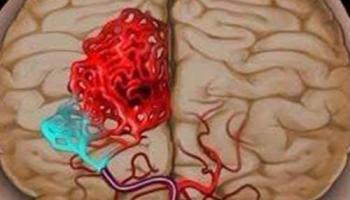
I'm a cardiovascular physician, and we always get a lot of patients with cardiovascular disease who come to the hospital late.
The reason is simple, because they have no idea what manifestation is cardiovascular disease. If they knew, can you think of a person who knows that he or she has already had a heart attack and would not rush to the hospital?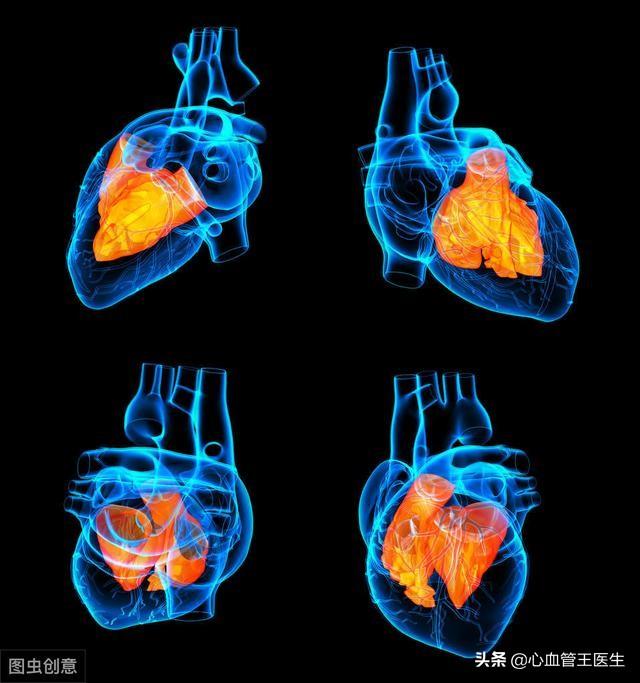
Cardiovascular disease can actually be divided into broad and narrow, broad cardiovascular disease includes many diseases, such as a variety of heart disease, hypertension, hyperlipidemia, cerebrovascular disease and so on are cardiovascular disease.
As a cardiovascular doctor, we often say that cardiovascular disease, that is, I can usually see, will see these diseases, there are many, simply put and heart-related these diseases, all belong to the cardiovascular. As a cardiovascular doctor, we usually treat patients, including: hypertension, hyperlipidemia, coronary heart disease, cardiomyopathy, arrhythmia, heart failure, valvular disease, cardiomyopathy, rheumatoid artery disease, pulmonary heart disease, pulmonary embolism, aortic coarctation and other diseases.
Therefore, it is difficult to accurately say, cardiovascular disease comes, there will be what performance. Must be described separately, as if high blood pressure, high blood fat, often there is no performance, you must go to the initiative to measure blood pressure, blood testing of blood lipids to know whether there is high blood pressure, whether there is high blood fat.
I'm used to dividing the heart into 3 parts: the blood vessels of the heart, the heartbeat, and the structure and function of the heart; different parts of the cardiovascular disease come and go with different manifestations.
I. Cardiovascular
It can be approximated as coronary heart disease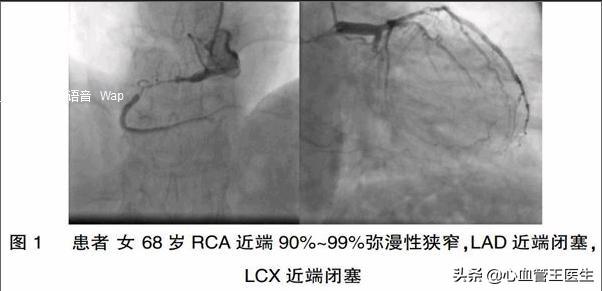
Many people think that cardiovascular disease is a disease of the blood vessels of the heart, in fact, not this kind. Accurately said heart blood vessels, that is, the heart arteries, we call the coronary arteries, the heart arteries caused by the disease, called coronary heart disease.
Coronary heart disease to have what performance, coronary heart disease is also divided into light and heavy, mild coronary heart disease, such as cardiovascular stenosis between 50-70%, is also coronary heart disease, big big most of this coronary heart disease does not have any performance.
It can only be assessed by the presence of risk factors such as three highs, family history, obesity, smoking and drinking, unhealthy diet, etc., or according to the carotid ultrasound to speculate whether there is coronary artery disease. Of course, if there is a high degree of suspicion, you can do a coronary CT to accurately see the degree of narrowing of the arteries of the heart, so as to diagnose whether there is coronary heart disease, or to exclude coronary heart disease.
For more severe coronary artery disease, such as stenosis of more than 70% or more, angina pectoris may occur. There are many manifestations of angina pectoris, but if angina pectoris occurs, then it is basically concluded that it is coronary artery disease.
Toothache, headache, headache in the throat, shoulder pain, back pain, chest pain, pain in the precordial area, epigastric pain, etc. may be angina. Tightness in the chest, tightness in the throat, urge to go to the toilet with a bowel movement, nausea and vomiting, profuse sweating, blackness in front of the eyes, fainting, etc. may also be angina. Therefore, we can't tell if it's angina based on whether it's pain in the heart area or not, because a lot of angina is not heart pain. The discomfort mentioned above usually lasts for about 2-15 minutes, most of which is just a few minutes, to be highly suspicious of angina. All angina is aggravated by activity, exercise, strain, exertion, exertion, labor, etc.; it is relieved by rest.
When the above manifestations are present, coronary artery disease must be suspected, and the diagnosis can be confirmed by ECG, exercise test, coronary CT or coronary angiography.
The most serious form of coronary heart disease is myocardial infarction. The manifestation of myocardial infarction is an upgraded version of angina pectoris, and angina pectoris that lasts for more than 20 minutes and is not relieved is myocardial infarction. It can be diagnosed by electrocardiogram, cardiac enzymes, coronary angiography and so on.
II. Heartbeat
It can be seen as an arrhythmia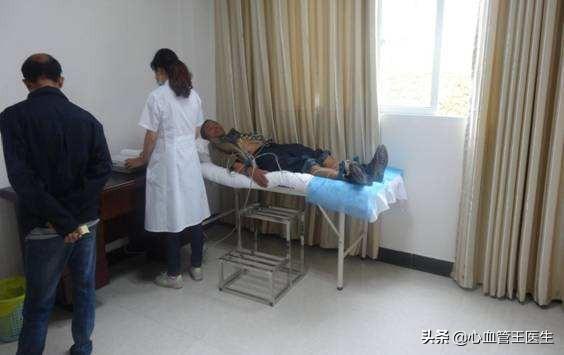
The heart beats as an independent system and is not directed by the brain. Problems with the heartbeat are arrhythmias, which are broadly categorized as: beating too slowly, beating too fast, beating erratically, and so on.
The common manifestations are: panic, palpitations, fast heartbeat, chest pain, shortness of breath, confusion in the heart, blackness in front of the eyes, dry cough, fainting, sudden death and so on.
Problems with the heart beating can be caused by other heart conditions, such as coronary heart disease myocardial infarction, heart failure, and other diseases that can lead to various arrhythmias. Of course there is also a possibility of idiopathic arrhythmia, which is a primary heartbeat problem without any specific cause.
Arrhythmias can be further diagnosed clearly by electrocardiograms, ambulatory electrocardiograms, esophageal provocation tests, electrophysiologic tests, and so on.
III. Heart structure and function
Includes heart valves, muscles of the heart, and ejection function in heart disease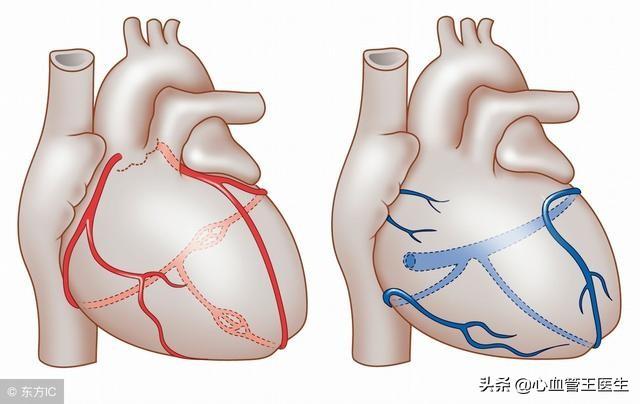
This type of heart disease, which can be difficult to detect early through symptoms, commonly includes congenital heart disease, valvular heart disease, cardiomyopathy, heart failure, and more.
All these diseases, initially, do not show much unless they are detected early by cardiac ultrasound at an early stage.
But once it manifests, it may be in the middle to late stages. This is because both valves and myocardium ultimately only manifest clinically when they manifest cardiac insufficiency, which is heart failure.
The most common manifestations of heart failure are dyspnea, chest tightness and breathlessness, inability to lie down at night, chest tightness and breathlessness aggravated by lying down, and the need to sit and breathe; chest tightness and breathlessness aggravated by activities. There may also be swelling of the lower limbs, low urine output, abdominal distension, dyspepsia and so on.
For heart function and structural problems, the examination is quite simple, do a heart ultrasound can find heart valves such as mitral valve, tricuspid valve, aortic valve, pulmonary valve there is no problem; can find the heart muscle there is no problem; can find the septum there is no problem; can find the heart function of the ejection fraction is normal or not ......
There are many signs of cardiovascular disease before it arrives, but the main ones are the 3 mentioned above. Once these three conditions occur, make sure to seek medical attention and find a cardiovascular doctor to take a look.
If it is cardiovascular disease, early detection and treatment, do not delay; if not cardiovascular disease, can also be assured!
Cardiovascular disease occupies the highest morbidity and mortality rate of the two most, but 75% of early-onset cardiovascular disease through the control of related risk factors can reduce the risk of occurrence, and has already occurred in the cardiovascular damage of the population through early treatment can also improve the survival rate, but the importance of early detection. What are the signs of cardiovascular disease? Next, Medical Xindanwei will analyze for you.
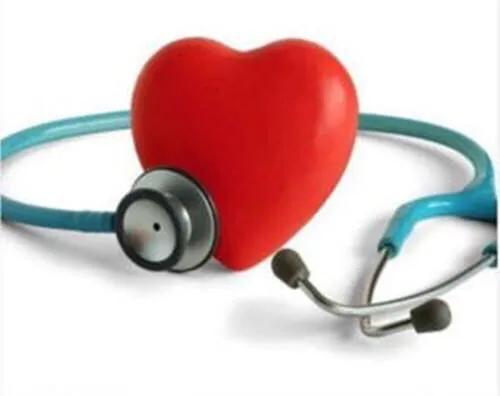
Cardiovascular disease is a disease that occurs in the coronary arteries of the heart, the carotid arteries of the head and neck and the cerebral arteries. Although they occur in different parts of the body, they have the same risk factors, coronary heart disease and cerebral infarction are mainly caused by hypertension, diabetes mellitus, dyslipidaemia, smoking and other risk factors, and the long-term existence of these risk factors will damage the inner lining of the arteries and accelerate atherosclerosis, and at the same time, arterial plaques can be formed, which increase the risk of stenosis and blockage. 狭窄与堵塞的风险,病变较重者可发生心肌梗死、脑梗死等严重心血管事件;脑出血主要由高血压引起,血压长期升高可形成微动脉瘤,当血压急聚升高则可增加血管破裂风险,从而引起脑出血。
These risk factors on the cardiovascular and cerebrovascular damage silently, especially in the early stage of the lesion is not easy to appear symptoms, such as coronary arteries, head and neck arterial stenosis is less than 50%, due to the myocardium, the blood supply of the brain tissue is not affected, usually will not be detected at an early stage, but if there is no timely intervention of the relevant risk factors, the stenosis of the blood vessels can continue to aggravate, the blood vessel stenosis to reach 50% is a critical point, then the myocardial and At this point in the rest state of the heart muscle and brain tissue blood supply can be compensated, but when the heart muscle, brain tissue blood supply needs to increase such as strenuous exercise, will not be able to meet the needs of the heart and brain, thus ischemia-related symptoms can occur, so patients with the following symptoms need to be vigilant, which means that cardiovascular disease has come.

Chest tightness and chest pain.These two symptoms are the main manifestations of myocardial ischemia, especially chest pain is representative, but the causes of chest pain are more causes, lung inflammation spread to the pleura can appear chest pain, herpes zoster involving the intercostal nerves can also appear chest pain, tumor invasion of the pleura, ribs and muscles can also cause chest pain, how can we distinguish? Chest pain caused by myocardial ischemia mainly occurs in the early stage during exercise, the movement of skeletal muscle requires a large amount of blood, the heart in order to meet this demand will increase the contractility of the heart, speed up the heartbeat, so as to shoot more blood to the aorta, but at this time the heart also needs more blood to meet the relevant demand, the narrow coronary artery restricts the movement of the heart, so it can lead to myocardial ischemia, which can occur in the anterior region of the heart or the back of the sternum. Pressure-like pain may occur in the precordial area or behind the sternum. As the early coronary lesions are mild, the chest pain may be relieved after resting. Chest tightness is mainly seen in some people with diabetes and the elderly. These people are unable to perceive pain due to nerve damage, but can experience chest tightness, which is also a sign of myocardial ischemia.
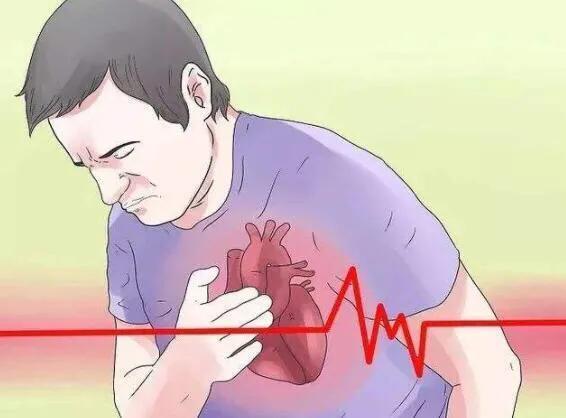
Dizziness, headaches.The brain is more sensitive to ischemia, but the symptom lacks specificity, which can be manifested as dizziness or headache, and these symptoms mean that the stenosis of blood vessels in the head and neck has reached more than 50%, and even if the stenosis of blood vessels in some patients is mild, if there is unstable arterial plaques, plaque rupture induces thrombosis, which aggravates the stenosis of blood vessels and may also cause related symptoms. Headache and dizziness in the early stage of cerebral ischemia are usually mild, but if it is a severe headache, then we need to be alert to cerebral hemorrhage. After cerebral hemorrhage, a large amount of blood rushes into the cranial cavity, which squeezes the brain tissues and causes intolerable headache, which is aggravated by coughing, or accompanied by nausea and vomiting, etc. However, different from vomiting caused by gastrointestinal disorders, the vomiting caused by cerebral hemorrhage is in the form of spurt. Whether it is cerebral ischemia or cerebral hemorrhage, due to the lack of neurological function, dizziness and headache may occur at the same time, there may be unilateral limb weakness and inability to move, sensory abnormalities and numbness of the limbs or loss of sensation, which are the signs of cerebrovascular disease.
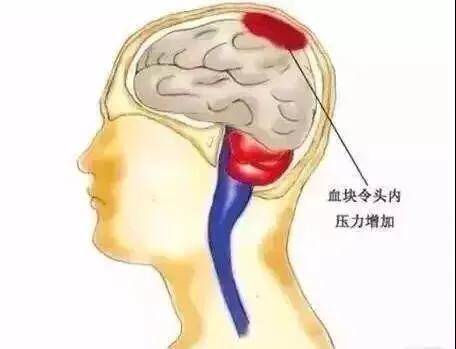
With the current medical technology, after the occurrence of cardiovascular disease through reasonable treatment can reduce the risk of death, but the most helpful measures to improve the future is to change the risk factors. Data from Europe and North America and other developed countries show that in recent years, the mortality rate of cardiovascular diseases in these countries has decreased by 50%-80%, and the reason for the decrease is attributed to the change of hypertension, dyslipidemia, diabetes mellitus, smoking and other risk factors; on the contrary, China, in recent years, the incidence of cardiovascular diseases and mortality rate not only did not decline, but also showed a rising trend, the failure to intervene in a timely manner in the cardiovascular The lack of timely intervention of cardiovascular risk factors is an important reason. Therefore, for cardiovascular disease, our focus is not on what symptoms may appear when the disease comes, some diseases such as cerebral hemorrhage can be no signs, once the onset of the disease may be progressive aggravation, increasing the risk of death, but our focus should be the existence of cardiovascular disease related risk factors, if the combination of these risk factors, should be early treatment and control of the relevant indicators to meet the standard, can significantly reduce the risk of long-term death of cardiovascular disease. The risk of death in the long term of cardiovascular disease can be significantly reduced.

Of course, the intervention of risk factors should be accompanied by lifestyle changes. Poor lifestyle not only increases the occurrence and progression of cardiovascular risk factors, but also accelerates the damage to blood vessels, so lifestyle changes are also important measures to reduce the risk of cardiovascular disease and the risk of long-term death. It is recommended to control daily sodium intake to less than 5g, reduce the intake of animal offal, fatty meat, seafood and animal fats and oils, which are rich in cholesterol and saturated fatty acids, which are the risk factors of atherosclerosis, and control the intake of added sugar, quit smoking and limit the use of alcohol, which can help to reduce the vascular lesions. At the same time, it is recommended that the daily intake of 300 grams of milk is beneficial to the cardiovascular and cerebrovascular, daily intake of 300-500 grams of vegetables and 200-350 grams of fruit, 250-400 grams of grains and potatoes, these foods are rich in potassium can help to control blood pressure, rich in dietary fiber can help to control blood glucose, lipids and other indicators, it is recommended that intake of 120-200 grams of poultry and eggs, these foods provide high quality protein, while cholesterol and saturated fatty acids, can help to reduce vascular lesions. These foods provide high-quality protein and at the same time, cholesterol and saturated fatty acid content is low, which can reduce the damage to blood lipids, blood vessels. In addition, it is recommended to exercise for half an hour a day, with moderate-intensity aerobic exercise as the main focus.
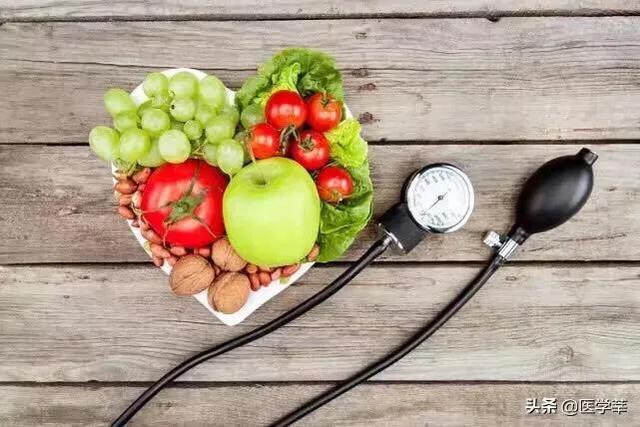
In summary, coronary heart disease, cerebral infarction and cerebral hemorrhage are common cardiovascular diseases, hypertension, diabetes mellitus, dyslipidemia, smoking and other risk factors are the main risk factors for these diseases. Coronary heart disease may occur in the anterior region of the heart, posterior sternal pressure-like pain, chest tightness, and other symptoms, which usually occurs after exercise; cerebral infarction may occur in the presence of dizziness, headache, cerebral hemorrhage can occur when a severe headache, nausea, In the case of cerebral infarction, dizziness and headache may occur; in the case of cerebral hemorrhage, severe headache, nausea, vomiting and other symptoms may occur. After the occurrence of cardiovascular disease, reasonable treatment can reduce the risk of death, but early intervention of related risk factors can not only reduce the risk of cardiovascular disease, but also reduce the risk of long-term death. Therefore, after the discovery of hypertension, diabetes mellitus, dyslipidemia, and smoking, risk factors should be treated in a timely manner and the relevant indicators should be controlled to meet the standard, and at the same time, change the lifestyle, low-salt, low-fat, low cholesterol, low-glucose diet, quit smoking and limit alcohol, increase vegetables, fruits, cereals and potatoes, and increase the amount of food. Increase the intake of vegetables, fruits, cereals and potatoes, dairy, and exercise for half an hour a day can help prevent and control cardiovascular diseases.
Thank you all for reading!
Please correct me if I am wrong!
Feel free to ask for advice and exchange ideas in the comments section! Note: The content of this article is intended as health science only, and is not intended as medical advice or opinion, and does not qualify as medical guidance.
Thanks for the question invitation!
Cardiovascular disease (CVD) is a general term for a large group of diseases, including coronary heart disease and stroke, which are the most important diseases affecting people's health today. In this question, we would like to know the "signs of cardiovascular disease", the so-called "coming" is a concept of time, Dr. Elf will analyze the answer from the perspective of both the long term and the near future.
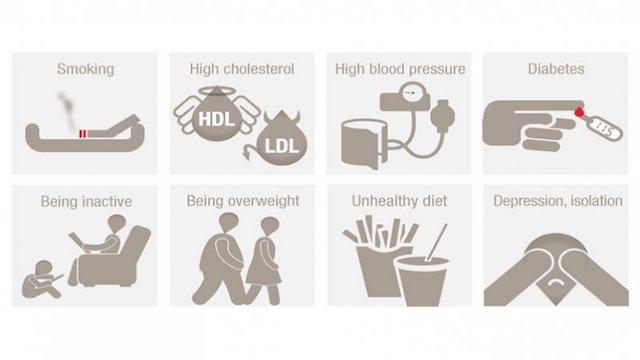
First of all, let's talk about the long-term "signs" of cardiovascular disease, which is commonly used in clinical medicine as the risk factors for cardiovascular disease, i.e., the presence of certain factors can increase the probability of cardiovascular disease. The presence of these factors does not mean that you have cardiovascular disease, but in the long run, the more risk factors the heavier the person, the higher the risk of cardiovascular disease. So what are the definitive cardiovascular disease risk factors that are currently in place? The proven ones are smoking, hypertension, diabetes, hyperlipidemia, obesity, sedentary lifestyle, low percentage of vegetables and fruits in the diet, heredity and so on.
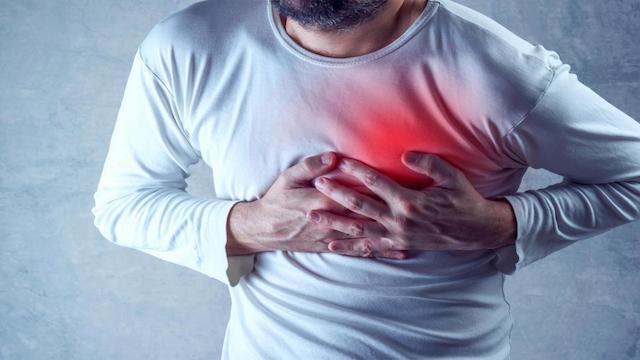
Let's talk about the recent "signs" of cardiovascular disease "onset". Unlike the "occurrence" described earlier, the emphasis here is on "onset", i.e., cardiovascular disease already exists at this time, but the disease does not have obvious clinical manifestations or cause serious organ function damage. As mentioned at the beginning, there are many types of cardiovascular diseases with different onset precursors, and the following is an introduction to some of the more important cardiovascular diseases:
1、Coronary heart disease and myocardial infarction: before the occurrence of this type of disease is often accompanied by body weakness, shortness of breath, easy to fatigue, palpitations and other sensations, if there is a typical symptom of chest tightness has entered the onset of coronary heart disease, if this symptom has frequent episodes and prolonged or occurs to a more intense degree, it suggests that myocardial infarction may have occurred;
2, stroke: stroke is divided into ischemic and hemorrhagic two categories, ischemic stroke before many people will have a transient ischemic attack of the early manifestations, such as transient limb weakness, aphasia, etc., if in this phase of the formal treatment can be avoided most of the occurrences of ischemic strokes; hemorrhagic strokes tend to be more sudden attacks, but many patients in the emergence of the former will have a headache, dizziness, blood pressure continues to increase the performance. the manifestations;
3. Aortic coarctation: the onset of this type of disease is sudden and there are few precursors of related symptoms, but if the disease can be diagnosed quickly and treated in time after the onset of the disease, adverse consequences can be avoided. In addition, depending on the location of the aortic coarctation, the symptoms also vary, occurring in the thoracic aorta can have chest pain, while occurring in the abdominal aorta can appear abdominal pain;
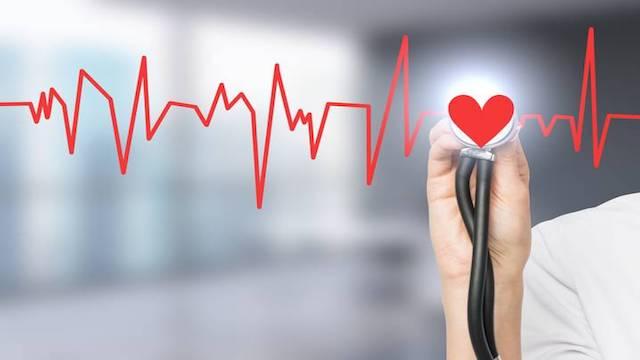
The above is a brief introduction to the signs and symptoms of cardiovascular disease from the perspective of its "occurrence" and "development", and it should be emphasized that the process of cardiovascular disease is very complex and difficult for the lay public to grasp. It should be emphasized that the onset and development of cardiovascular disease is a very complex process, which is very difficult to grasp by non-professionals. Therefore, Dr. Elf suggests that if you are unwell, you need to consult a doctor in a timely manner, so that a professional doctor can assess your risk, which can help you achieve twice the result with half the effort.
Hello, everyone! I'm Dr. Cho with a serious attitude.
Cardiovascular disease is actually a very large concept, encompassing a very large variety of diseases, and different diseases often have different clinical symptoms and signs. Here, we will talk about a few of the most common cardiovascular diseases and what symptoms and early signs they generally have.
First, high blood pressure:
Hypertension is the most common cardiovascular disease, and there are at least 240 million patients in China, and there is a trend of increasing youthfulness. Hypertension is not only a disease, but also an important risk factor for many other cardiovascular diseases, such as coronary heart disease and heart failure.
In the clinic.About half of the patients with hypertension are not clinically significantThe remaining half of the hypertensive patients often describe a wide range of symptoms, such as dizziness, headache, numbness of the scalp, tightness in the chest, shortness of breath, stiffness of the neck, etc. In fact, a closer look reveals that many of these symptoms are actually caused by something else, not necessarily hypertension. In fact, if you look closely, you will find that many of these symptoms are caused by other reasons, not necessarily high blood pressure.
In fact.Hypertension does not really have any very specific clinical symptoms or signs in the clinic, especially in its early stages.. When hypertension goes uncontrolled for a long time and causes damage to the target organs (heart, brain, kidneys, eyes, etc.) and the corresponding symptoms appear, then it is already too late. So.Recognition of early hypertension, which cannot be based on symptoms, requires regular blood pressure measurements by oneself, which is the correct way to detect high blood pressure!

Second, coronary heart disease:
Coronary heart disease (CHD), a disease in which atherosclerosis causes narrowing or occlusion of the coronary arteries, leading to ischemia, hypoxia and even necrosis of the heart, is also very common and can sometimes be fatal.
Coronary heart disease, on the contrary, exists with some more typical symptoms.The most common is angina.。
The most typical angina pectoris, often fulfilling all three conditions at the same time:
- Chest pain or tightness is located in the precordial area with some regularity;
- It can be triggered by exertion or emotional stress;
- Rest or nitrate medication may provide relief.
Whereas, if any two of the above conditions are satisfied only, it is aatypical angina pectoris; those that satisfy only one or none of the above belong toNon-anginal chest pain。
But in recent years.An increasing number of patients with non-anginal chest pain are also eventually diagnosed with coronary heart disease. So.The diagnosis of coronary heart disease involves not only observing the symptoms and signs, but also carefully evaluating the risk factors for atherosclerosis.. If a person has many risk factors for atherosclerosis (e.g., hypertension, dyslipidemia, diabetes mellitus, smoking, family history, etc.), then coronary artery disease should be suspected even if the chest pain is nonanginal chest pain.
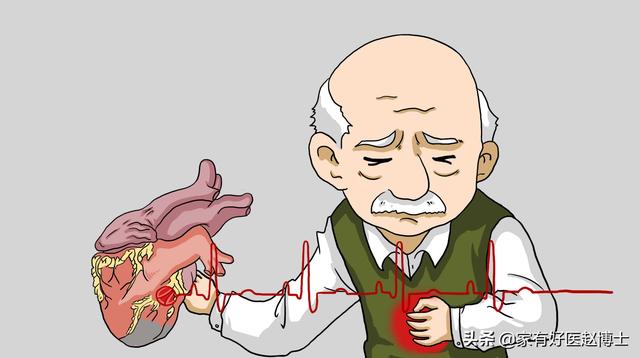
Third, arrhythmia:
Arrhythmias are also a large group of disorders that commonly include various types of preterm contractions, sinus tachycardia, sinus bradycardia, supraventricular tachycardia, atrial fibrillation, and more.
Arrhythmias often cause the heart to beat faster, slower, or beat in an irregular rhythm, and these often manifest themselves asSymptoms such as palpitations, panic attacks, and a strong heartbeat。
It is advisable to get into the habit ofWhen you experience palpitations or panic attacks, immediately feel your pulse or heartbeat to see how many times a minute it is, and whether it is in a regular rhythm.If the heart beats particularly fast or irregularly when you have panic or palpitations, or if you can feel the heart "missing" a beat, then you should suspect that this feeling is the result of a heart rhythm. If the heart beats particularly fast or irregularly when you have a panic attack or palpitation, or if you can feel your heart "missing" a beat, then you should suspect that this feeling is caused by an arrhythmia. Ideally, you should go to the hospital immediately to have an electrocardiogram (ECG) done at the time of the attack, or have a 24-hour ambulatory electrocardiogram (EKG) done to catch the arrhythmia at the time of the attack.
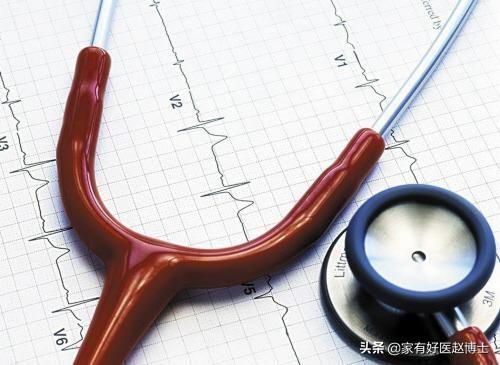
Fourth, heart failure:
Heart failure, commonly referred to as heart failure, is a state of end-stage progression in almost all heart diseases. Few healthy people develop heart failure without warning, unless some causative factor suddenly triggers acute heart failure; often, patients with pre-existing cardiovascular disease do not have the disease under effective control, and it progresses to chronic heart failure over time.
The clinical manifestations of heart failure are still typical, for example, theEdema in the legs, ankles and feet, significant short-term weight gain (more water), feeling breathless or wheezing when lying down, and a significant decrease in exercise endurance。
Anyone who has been diagnosed with cardiovascular disease needs to be alert to heart failure, and the best way to prevent it from occurring is to manage the progression of the current disease really effectively.
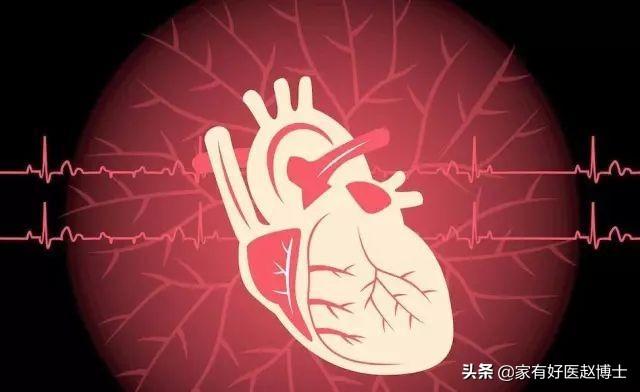
A final note.The diagnosis of any disease cannot be surmised by symptoms or signs alone, which must be analyzed together with the assessment of causative risk factors and medical tests to avoid delays in diagnosis and treatment.

Follow Dr. Zhao to share valuable medical knowledge with more friends!
Cardiovascular disease, including the heart blood vessels, blood circulation, neurohumoral regulation for the whole body tissue transportation of blood, through the blood will be oxygen nutrients hormone transmission to the tissues, and the tissues to take away the waste to maintain the normal metabolism of the human body, any of these tissues and organs of the symptoms, there will be a cardiovascular disease comes, the most common cardiovascular disease before the arrival of the signs are as follows.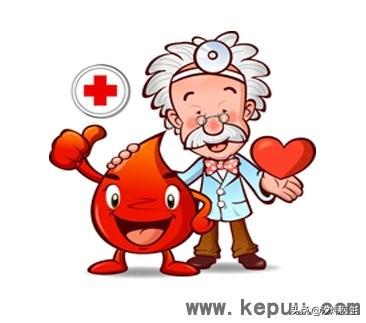
1. Congenital cardiovascular disease is also known as congenital heart disease in the heart, large blood vessels in the fetal period in the development of more abnormal, the lesion can be involved in the heart of the major tissues and large blood vessels.
2. Acquired cardiovascular diseases, including atherosclerosis, most commonly of the coronary arteries of the heart, cerebral arteries, peripheral arteries, coronary atherosclerotic heart disease and ischemic heart disease.
3. Rheumatic heart valve disease may cause endocarditis myocarditis cardiomyopathy myocardial damage induced clinical symptoms.
4. Hypertensive heart disease. It is due to the long-term high blood pressure under the action of the heart caused by vascular valvular lesions, cardiac hypertrophy, induced cardiogenic myocardial enlargement, hypertensive heart disease, heart failure, chest tightness and shortness of breath and other symptoms.
5. Arrhythmic heart disease. Documentation is still due to premature arrhythmia, bradyarrhythmia, tachycardia, sinus node block, these can be caused to varying degrees by changes in the functional structure of the heart, induced heart failure, chest tightness and shortness of breath symptoms.
6. Pericardial diseases, including pericarditis pericardial effusion, pericardial pus. Pericardial disease will to a certain extent appear around the tissue of ischemia and hypoxia subcap blood pressure drop, chest tightness and shortness of breath.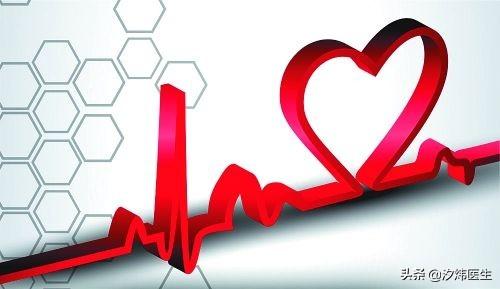
These are the most common diseases of cardiovascular disease, most of the signs may occur purple dry dyspnea, coughing up blood, chest pain, palpitations, a small amount of urinary edema, headache, vertigo, pain in the epigastric region, nausea and vomiting, hoarseness, and the most common signs may also combine with hypertrophy of the heart, additional heart murmurs heart murmurs, pericardial friction, arrhythmias, including hepatomegaly there are abdominal Fluctuations in the arteries, edema of the lower extremities, mitral stenosis and the formation of pulmonary hypertension may also be present with purplish coloration of both faces.
The pre-morbid signs of cardiovascular disease are only typical symptoms, which need to be combined with the patient's signs and symptoms, as well as cardiac electrocardiograms, cardiac ultrasound or 24-hour ambulatory electrocardiograms, to observe changes in the heart rate and rhythm, to choose the treatment of the primary disease, and to prevent the development of complications.
Cardiovascular disease is currently the number one killer threatening human health, especially regrettable is that many people do not realize that they have cardiovascular disease until they have a heart attack. In fact, cardiovascular disease has a certain degree of invisibility, but some of the details if the early attention and discovery, can help us find the body as early as possible, as early as possible to treat the disease. So what are the signals that indicate the arrival of cardiovascular disease? There are many types of cardiovascular diseases, including coronary heart disease, heart attack, malignant arrhythmia and other diseases that pose the greatest threat, and here we focus on the warning signs of these diseases.
Common Signs of Approaching Serious Cardiovascular Disease
(1) Chest pain or unexplained pain in other areas
Chest pain is the most common sign of heart disease and often manifests as pain in the precordial area or behind the sternum. This pain is a tight squeezing pain that lasts for a short period of time and is caused by a variety of factors that irritate the afferent nerve fibers that innervate the heart, aorta, or intercostal nerves.
At the same time, it should be reminded that heart attack manifests itself in various forms, and pain in the shoulders, jaw, throat, teeth and other parts of the body may also be a manifestation of heart attack. Therefore, if the coronary heart disease patients, the appearance of these parts of the pain, must go to the hospital as soon as possible to the cardiology department for examination.
(2) Chest tightness, breathlessness, dyspnea
When left heart insufficiency occurs due to heart disease, people may feel that there is not enough air to breathe, they cannot breathe well, and their chest seems to be pressed by something. Some may occur after exercise and labor; some may occur suddenly at night while sleeping; some may occur while lying down and be relieved by sitting up, all of which suggest that there may be a heart disease and one should go to the hospital for examination as soon as possible.
(3) Palpitations, panic attacks, difficulty in sleeping
Due to the disturbance of the cerebral cortex in patients with cardiovascular disease, phyto-neurological dysfunction leads to the appearance of panic and palpitations. These symptoms can make it difficult for the patient to fall asleep. When symptoms occur, you can measure your own pulse, if you find irregular and chaotic beating, pulse is too fast or too slow, you should be alert to may be a sign of heart disease.
(4) Dizziness, fainting, etc.
Dizziness can often be a result of malnutrition, but if you find yourself experiencing unexplained dizziness or fainting, be alert for circulatory problems that prevent blood from carrying enough oxygen to the brain.
(5) Abnormally elevated blood pressure and blood lipids
High blood pressure and high blood fat on the human cardiovascular system damage, is carried out subconsciously, if not regular physical examination, many people with high blood pressure or high blood fat even do not know their own indicators of abnormalities, and high blood pressure, high blood fat are coronary heart disease is the main risk factors.
For people with high blood pressure and high blood lipids, if the recent indicators are significantly abnormally high, you also need to be alert to the possibility of serious heart disease may occur, it is best to see the cardiology department in a timely manner, to control the indicators in the normal range.
concluding remarks
The heart, as one of the most important organs in our body, is a very sophisticated organ with very beautiful circuits, waterways and structures, and has its own chain of command, while maintaining the body's blood circulation throughout the body properly, as if it were the engine of the body. We can determine whether there are signs of cardiovascular disease by observing certain symptoms in the body. But these symptoms are not unique to cardiovascular disease, the final diagnosis is to go to the hospital after a professional doctor's diagnosis to know.
Finally, in addition to knowing the common cardiovascular warning signs mentioned above, it is still necessary to emphasize the importance of a healthy lifestyle in preventing heart disease, and attention needs to be paid to controlling the three highs, quitting smoking and restricting alcohol, eating a healthy and balanced diet, and maintaining body weight.
What body signals are indications of impending cardiovascular disease?
Patients with cardiovascular disease can be completely asymptomatic in the early stages, and the emergence of symptoms (often acute onset or progression of the disease) is the main reason for patients to seek medical attention, but also one of the clinicians to diagnose the disease and determine the condition of one of the important basis.
Common clinical symptoms of cardiovascular disease include chest pain, weakness, shortness of breath, palpitations, fainting, sudden death, edema, nausea, and headache. Since the human body is a whole, cardiovascular disease may affect the function of other systems and organs. Conversely, diseases of other systems and organs may also affect the function of the cardiovascular system. Therefore, the common symptoms of cardiovascular disease described above can also be seen in diseases of other systems and organs. As for each specific cardiovascular disease symptom, it may be a primary symptom in one disorder and a secondary symptom in others. Even when the same cardiovascular disease is present, their symptoms often differ from each other and are not consistent. That is, the phenomenon of different diseases with the same symptoms or the same disease with different symptoms is not uncommon in cardiovascular disease clinics.
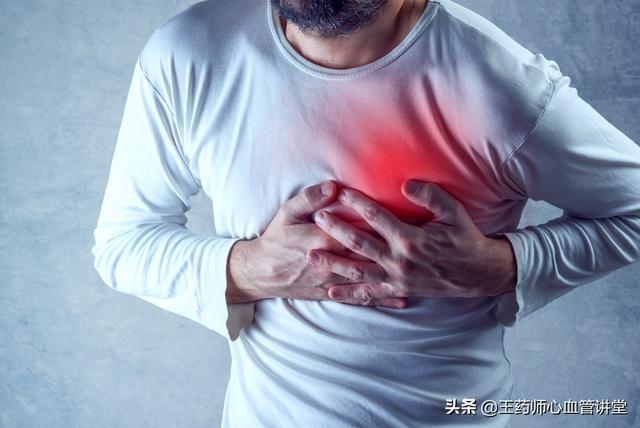
In addition to the common symptoms, there are many other heart disease patients who will have some special manifestations at the onset of the disease and should be alerted.
1. Toothache
Toothache is usually considered as a disease of the tooth itself and the periodontal tissues, such as dental caries, pulpitis, periodontitis, etc. However, there are a few patients with angina who have an attack but manifest it as a toothache, especially when accompanied by tightness and discomfort in the chest or profuse sweating, they should consider whether it is an attack of angina rather than being misled by the toothache.
2. Shoulder pain
Shoulder pain in middle-aged and elderly people is mostly caused by frozen shoulder or cervical spondylosis. However, sometimes heart disease may also reflexively manifest as shoulder pain, especially when the shoulder pain is not related to the climate and manifests as paroxysmal pain in the left shoulder and the inner side of the left arm.
3. Long-term persistent snoring
Middle-aged and elderly people who continue to snore for a long time should watch out for cardiovascular disease.
4. Tinnitus
It has been reported that in recent years, researchers have found that heart patients in the early stages, there are varying degrees of tinnitus phenomenon, the reason is that the microvascular of the inner ear is very sensitive to the internal or external weak changes in the cardiovascular dynamics of abnormalities have not yet caused a systemic response, the inner ear has been the precursor signal. Therefore, middle-aged and elderly people with frequent tinnitus. It should be examined by a doctor.

5. Dizziness
According to clinical observation, many dizziness and even serious fainting phenomenon of some patients may be caused by heart disease. One of the more common is a slow heartbeat resulting in varying degrees of cerebral ischemia, hypoxia and caused by the slow heartbeat is often caused by the "sick sinus node syndrome".
6. Lower limb edema
Sometimes unexplained lower limb edema in middle-aged and elderly people is often a manifestation of cardiac insufficiency, resulting in obstruction of venous blood return, which is often a symptom of heart disease. When the middle-aged and elderly people have slight edema, and the urine test is normal, basically exclude kidney disease, then the cardiovascular disease may be greater, should be early medical care.
I am Pharmacist Wang, dedicated to helping you manage your body by explaining complex and difficult disease knowledge in plain words. Your likes are my greatest motivation! Also, if you have family members with heart disease related problems, please pass this article on to them!
The most common cardiovascular disease to visit is acute myocardial infarction. Acute myocardial infarction is a serious type of coronary heart disease, which is myocardial necrosis caused by acute and persistent ischemia and hypoxia due to severe stenosis or complete occlusion of coronary arteries.
This disease is extremely common in Europe and the United States, about 1.5 million people in the United States each year myocardial infarction; China's myocardial infarction incidence in recent years has been a significant upward trend, at least 500,000 new cases each year, the number of cases of disease is now at least 2 million.
To prevent the occurrence of acute myocardial infarction and to do early prevention and treatment, first of all, we need to have a certain understanding of acute myocardial infarction as a health killer.
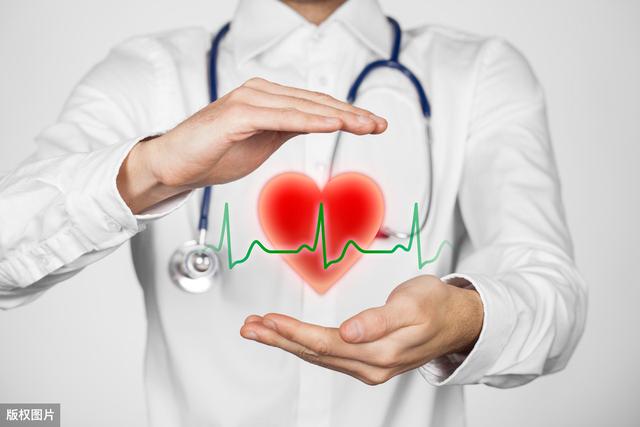
Symptoms of acute myocardial infarction and coping strategies
The onset of acute myocardial infarction varies greatly, the vast majority of the onset of acute, serious symptoms; some symptoms are mild, did not attract attention and did not consult the doctor; a very small number of patients have no obvious symptoms, for asymptomatic myocardial infarction. Common symptoms of myocardial infarction include the following.
Precursor Symptoms:
Many patients think that the onset of myocardial infarction is very sudden and unavoidable, in fact, about half of the patients with acute myocardial infarction have aura symptoms a few days before the onset of the disease. The most common aura symptoms are the original angina aggravation, prolonged attack time or nitroglycerin sensitivity deterioration, or previous angina who suddenly appeared prolonged angina, often accompanied by restlessness, sweating, fear or sense of imminent death. The possibility of myocardial infarction should be thought of when patients with coronary artery disease or the elderly suddenly develop unexplained arrhythmia, heart failure, shock or fainting.
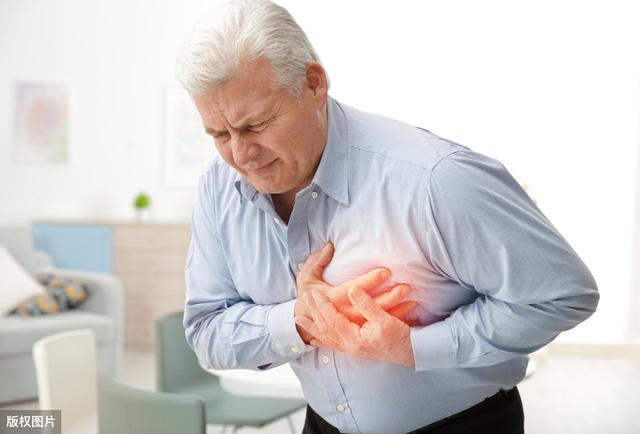
Chest tightness and chest pain:
Sudden onset of severe and persistent retrosternal or precordial crushing pain, or precordial tightness, binding, pressure, suffocation, pain can be radiated to the left side to the left shoulder, left arm to the left little finger, rest and nitroglycerin can not be relieved, often accompanied by restlessness, sweating, fear, or a sense of imminent death. In a few patients, the pain site may be located in the neck, jaw, teeth, epigastric region, etc. Especially patients who present with middle and upper abdominal pain are prone to misdiagnosis.
Gastrointestinal symptoms:
Manifestations include nausea, vomiting, and abdominal distension, with occasional diarrhea and intractable eructation, mainly due to irritation of the septal nerve, and are more common in patients with inferior wall myocardial infarction.
Fainting:
Some patients with myocardial infarction experience sudden syncope, which is common in the early stages of acute inferior wall myocardial infarction, mostly due to bradyarrhythmias.
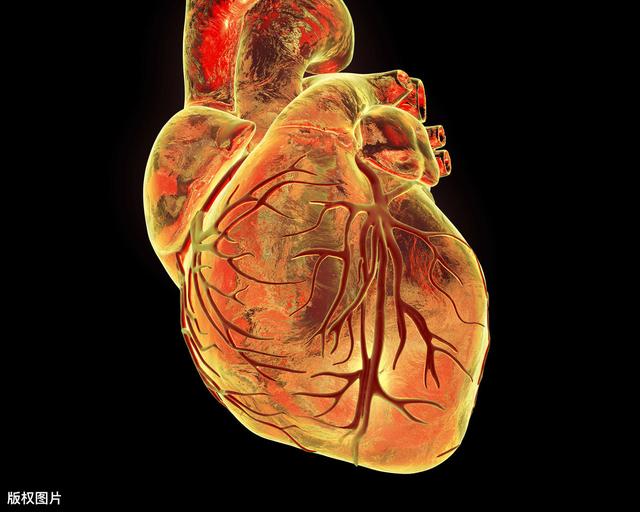
Heart failure:
Mainly acute left-sided heart failure, which is easy to occur in the early stage of the disease, or may occur several days after the onset of the disease, manifested by dyspnea, cough, cyanosis, irritability, etc., and in severe cases, pulmonary edema or and then total heart failure, jugular vein rages, hepatic stasis, and lower limb edema, etc..
Arrhythmia:
It occurs within 1 to 2 weeks of disease onset and is more common within 24 hours. Anterior wall myocardial infarction is prone to ventricular arrhythmias, and inferior wall myocardial infarction is prone to heart rate slowing and atrioventricular block.
Hypotension, shock:
Hypotension can be caused by severe pain, profuse sweating, nausea and vomiting, blood volume insufficiency and arrhythmia in acute myocardial infarction. When large myocardial infarction, cardiac blood volume decreases dramatically, which can cause cardiogenic shock, manifested as pale face, cold and wet skin, agitation or indifference, increased heart rate, decreased urine output, and so on.

Systemic Symptoms:
The main manifestations are indescribable malaise and fever. It is mainly caused by the absorption of necrotic myocardial tissue, and the temperature is usually around 38°C, rarely exceeding 39°C, lasting for about a week.
Tips: Once the symptoms related to acute myocardial infarction appear, they must be taken seriously. Patients should first take bed rest, keep quiet and avoid excessive mental stress. No hypotensive state can be sublingual nitroglycerin or spray inhalation of nitroglycerin, if not relieved, after 5 minutes can take another piece of nitroglycerin. If angina is relieved by the above operation, you should go to the hospital as soon as possible; if the chest pain is not relieved for 20 minutes or severe chest pain accompanied by nausea, vomiting, dyspnea, fainting, etc., you should call an ambulance to send to the hospital for further examination.

What tests are available for acute myocardial collapse
Tests to confirm the diagnosis of acute myocardial infarction include electrocardiogram, cardiac enzymes, and coronary angiography.
ECG:
It is the most commonly used and the easiest and fastest way to diagnose acute myocardial infarction. Different types of myocardial infarction have their characteristic manifestations, for example, the electrocardiogram of acute ST-segment elevation myocardial infarction is characterized by the ST-segment elevation, the newly appeared pathologic Q-wave, and the dynamic evolution of the ST-T, and so on.
Cardiac enzymes:
Elevated cardiac enzymes such as creatine kinase isoenzyme and troponin are another important indicator for diagnosing acute myocardial infarction. Cardiac enzymes can start to increase in 3-6 hours after the onset of the disease, creatine kinase isoenzyme mostly returns to normal in 3-4 days, and troponin usually takes 2 weeks to return to normal.
Coronary angiography:
It is an invasive test in which a contrast catheter is inserted through an arterial line in the patient's hand or leg all the way to the opening of the coronary artery in the heart, and then a contrast agent is injected into the coronary arteries through the catheter, which reveals the blockage in each coronary artery.
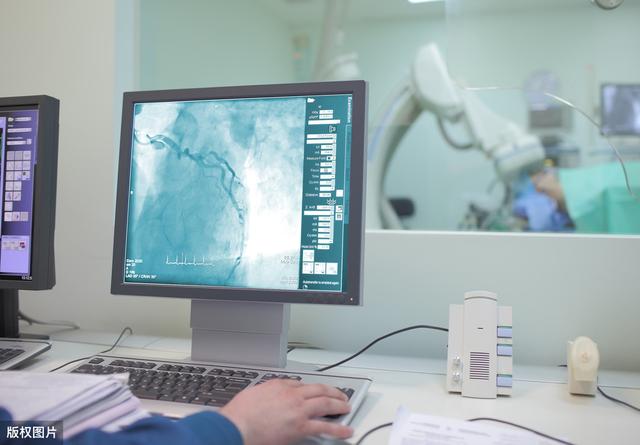
Familiarity with etiology and control of risk factors is key
Risk factors for acute myocardial infarction, also known as risk factors for coronary heart disease, include both controllable and uncontrollable risk factors.
Controllable risk factors include:
Hypertension, dyslipidemia (high total cholesterol, high LDL cholesterol or low HDL cholesterol), overweight (or obesity), high blood sugar (or diabetes mellitus), poor lifestyle (smoking, etc.), irrational diet (high-fat, high cholesterol, high-calorie, etc.), lack of physical activity, excessive alcohol consumption, and psychosocial factors.
Uncontrollable risk factors include:
Gender, age, family history, etc.
People with these risk factors are prone to myocardial infarction, but if none of the risk factors are present, the likelihood of myocardial infarction is very low. Therefore, we should adopt a good lifestyle, stay away from high-fat, high-salt and high-sugar diets, eat a light diet, and quit smoking under the guidance of a doctor in order to avoid angina pectoris or even myocardial infarction and other cardiac crises to the maximum extent possible.

Tell me about my own experience.
At the beginning of 2017, I went to Singapore and worked in the best factory. That factory is for medical supplies, and you have to wear the so-called space suits to work in the clean room. When I was working there for about 8 months, one day when I was on the night shift, I was walking and swaying to one side, I thought I was dizzy or too tired, so I didn't care. When I went back to bed, my sister said that I slept with one eye open and one eye closed. And I said she was making it up. Then when I woke up, half of my body is very numb, because I am flat on my back to sleep can not figure out why half of my body will be numb, and then the next thing is to go to work, the top of the head a severe headache, the above symptoms I do not know what to do, but also did not care about him, until one day. Suddenly half of my face can not move face paralyzed ......
These are my experiences of the symptoms on the body sheet when there are cardiovascular problems.
So if cardiovascular disease occurs, the front is symptomatic, be sure to pay attention to the body to send these signals early to treatment
Cardiovascular attacks are suggestive!
Symptom 1: Development of systemic symptoms
Cardiovascular disease patients should pay attention to is prone to systemic symptoms, generally in the early stage of cardiovascular disease is easy to manifest for the whole body symptoms, the patient will appear dizziness, and easily agitated, not easy to concentrate on the situation, these are common symptoms, once appeared, it is best to pay attention to, or for examination just in case.
Symptom 2: Easily irritable, palpitations
Typical symptoms of cardiovascular disease is irritability, palpitations, which is due to the cerebral cortex of cardiovascular disease patients with disorders, plant nervous system dysfunction leads to the patient's mood irritability. And mood irritability will affect the patient's sleep quality, leading to sleep deprivation.
Symptom 3: Limbs are prone to numbness
Patients with cardiovascular disease sometimes also experience numbness in the limbs, mostly in the fingers and toes, some of which are as unpleasant as the sensation of ants crawling over them.
Symptom 4: Memory Loss
Patients with cardiovascular disease also tend to exhibit symptoms of memory loss, which occurs when the condition is exacerbated. When cardiovascular disease worsens, patients may also experience periods of lucidity and blurriness.
Cardiovascular disease is a common and more serious disease, so we should strengthen the prevention in our daily life to reduce the incidence of cardiovascular disease.
Above~
Concerned about the "39 health must know" headline, more health science knowledge easy to see ~ ~ ~ ~
This question and answer are from the site users, does not represent the position of the site, such as infringement, please contact the administrator to delete.